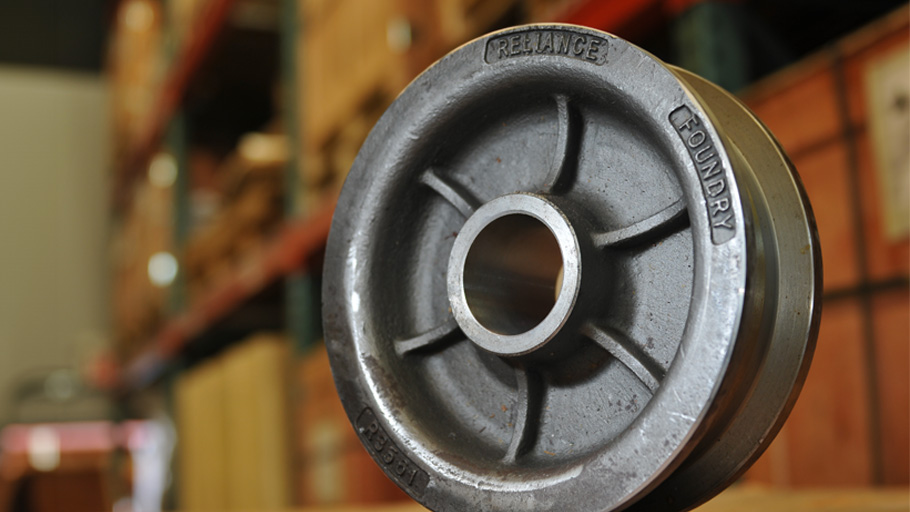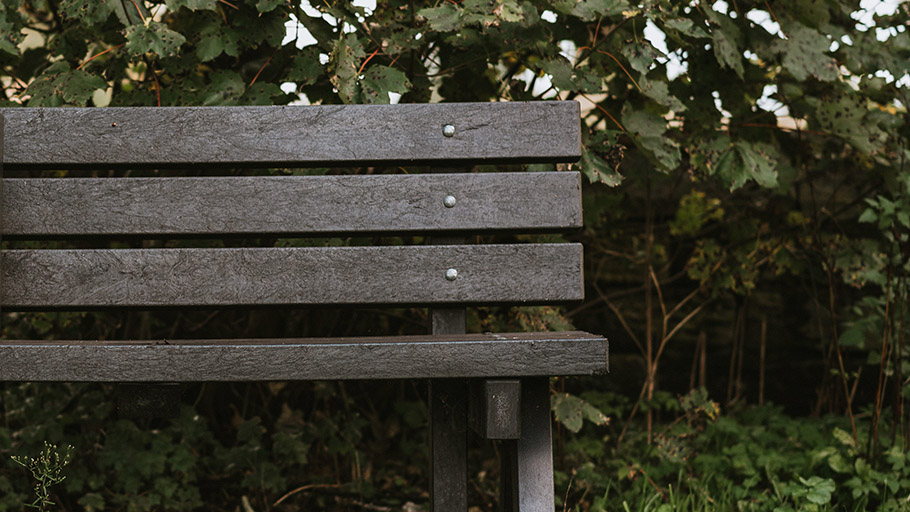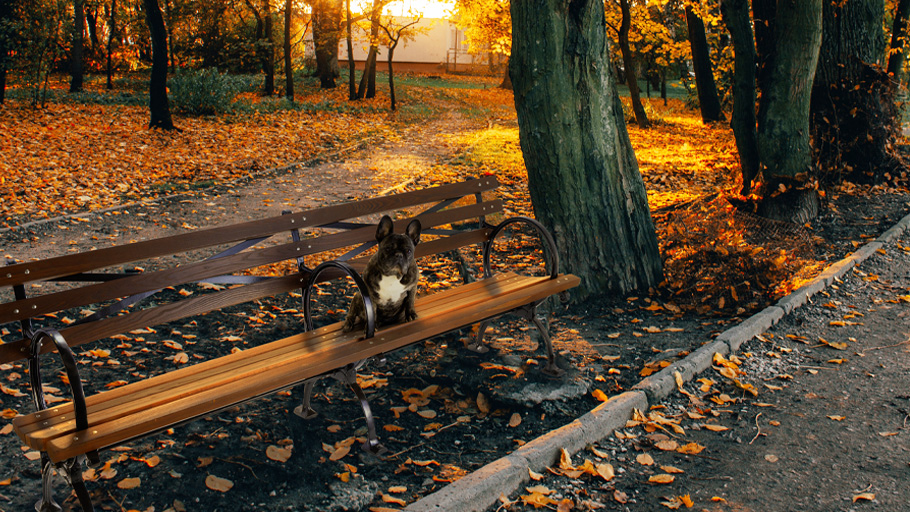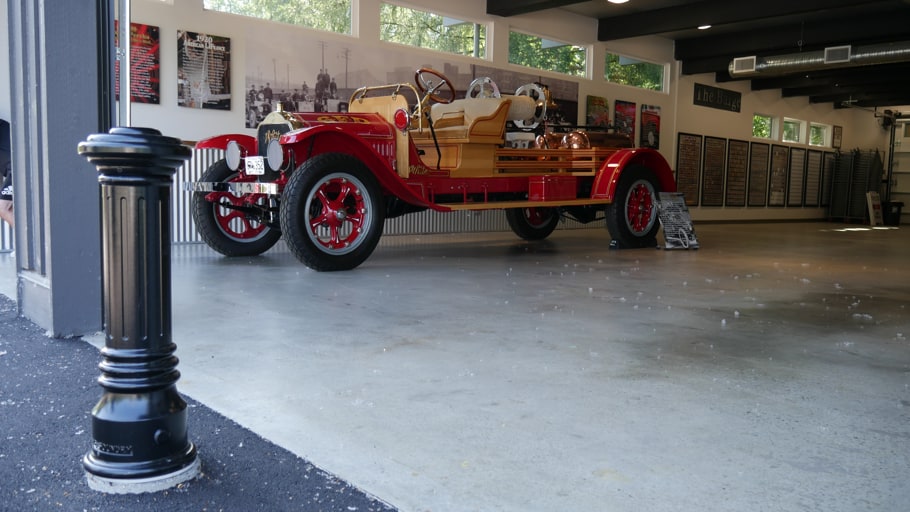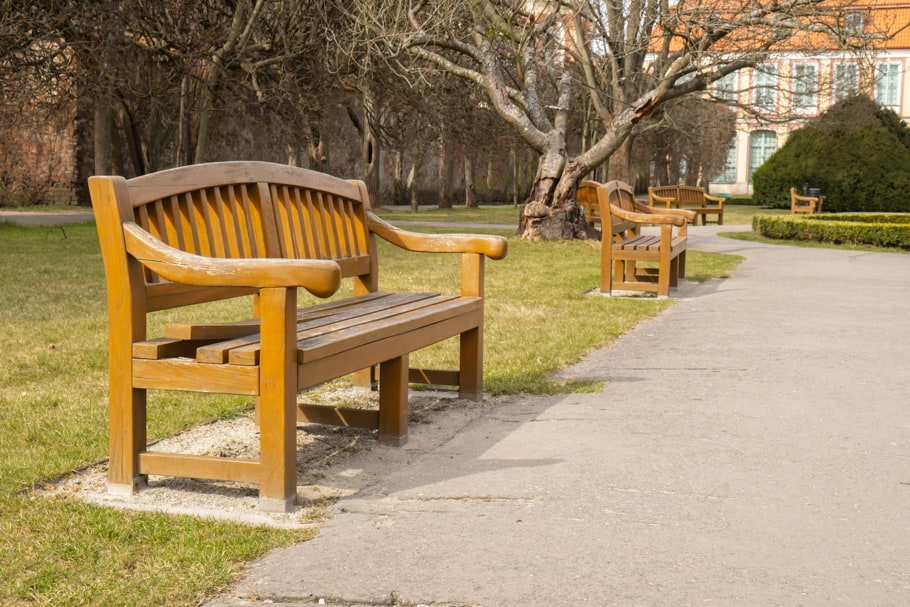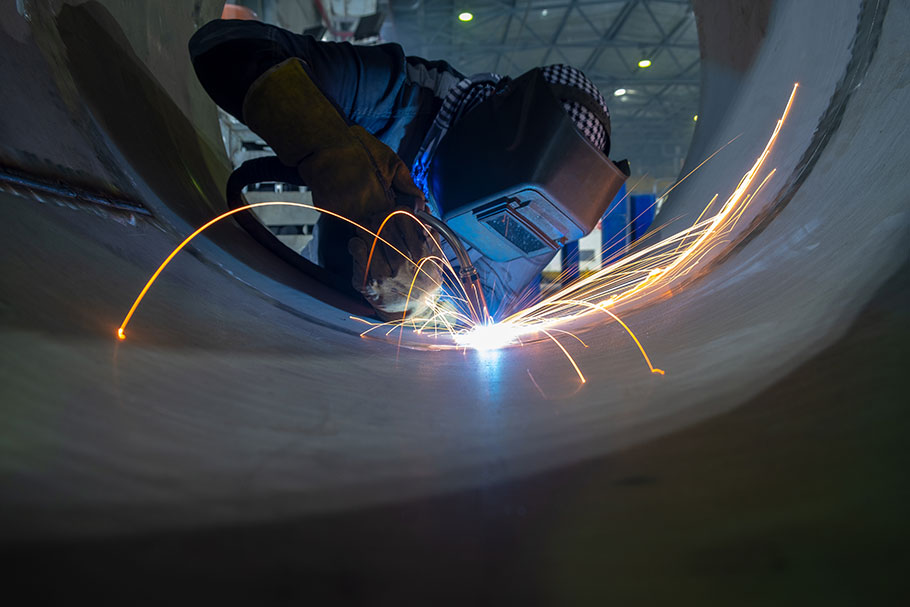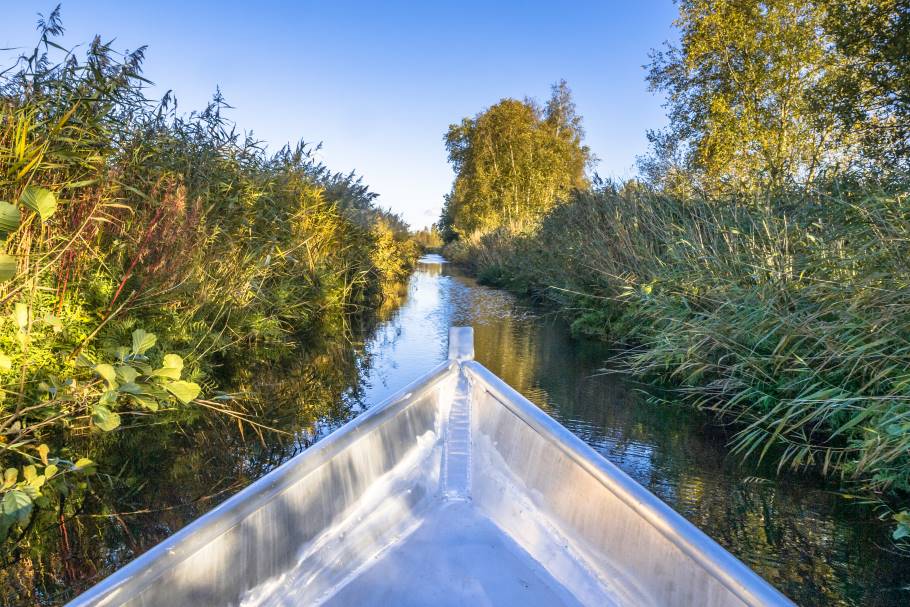The chemistry of corrosion: how to clean and protect your metal items
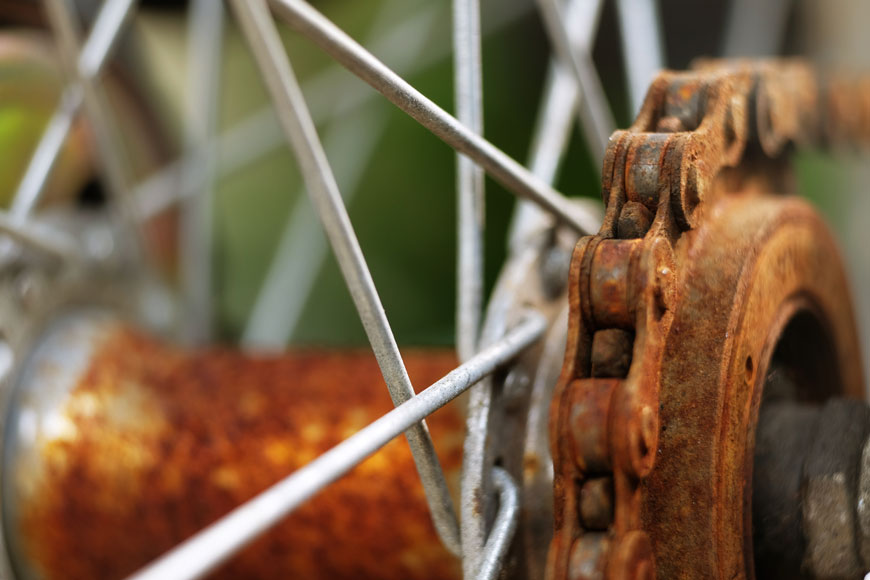
Rust is the common name for the chemicals that result when iron reacts with oxygen and water. “Rust” is poorly defined in chemistry, however—lots of chemicals can be formed when iron is left exposed. However, we generally refer to the red, flaky look that results from certain chemicals as rust.
Corroding iron or steel produces many different compounds in regular environmental conditions. Some of these chemicals will be black, blue, yellow, gray, or brown, depending on what molecules they grab from the environment while rusting. For example, acid rain that contains sulfur can combine with iron to create molecules of pyrite, the yellow mineral called “fool’s gold.” These minerals are not what we think of as rust at all. What we usually mean is some type of iron oxide (III), one that is red or red-brown in appearance.
When we speak of iron rusting, therefore, we don’t always relate it to the chemical changes we observe in other metals we regularly use. We do not speak of silver or copper “rusting.” Instead, copper is said to develop a patina, and silver is said to tarnish. All these terms describe exposed metal corroding.

Why does iron rust? Why doesn’t copper rust?
Metals corrode through chemical reactions with their environment. Refined, human-usable metals are often not in their most thermodynamically stable form. They react with molecules in the air around them to find a more stable state.
In rusting iron, this is a process of oxidization, where oxygen and water work to produce iron oxides. Corrosion can happen with other molecules, however. Silver tarnish is often produced by reactions with hydrogen sulfide, a gas that smells like rotten eggs and is produced by bacterial decomposition in low-oxygen environments. If you have silver near a swamp, or near a garbage dump, it will tarnish quickly!
Some metals don’t corrode because they are already chemically stable. Gold and platinum are examples: they’re more likely to be found as pure elemental metal in the earth’s crust for this reason. Silver is also found as a pure metal, because when it tarnishes, the tarnish itself creates a thermodynamically stable seal around the rest of the metal. This passive film prevents further corrosion of layers farther down, in a process called passivation.
Copper’s patina, responsible for the distinctive green color of the Statue of Liberty, is an example of a passive film that protects the metal underneath; the verdigris formed by the weathering of copper maintains its bond to the layer of copper below, sealing and protecting it from atmospheric molecules.
In contrast, red iron oxides (III) do not bond to the iron beneath them, but rather pull away and flake off. Therefore, rust does not provide a passivation layer, but instead corrodes away, exposing the next layer of iron to oxidization.
Some iron-based alloys, like stainless steel, are known for being rust-resistant. Rust-resistant iron alloys have a metal in the mix that creates a passive and protective film before rust can set in. For stainless steel, passivation is created by the addition of chromium, which oxidizes quickly, leaving a very thin layer that protects the iron.
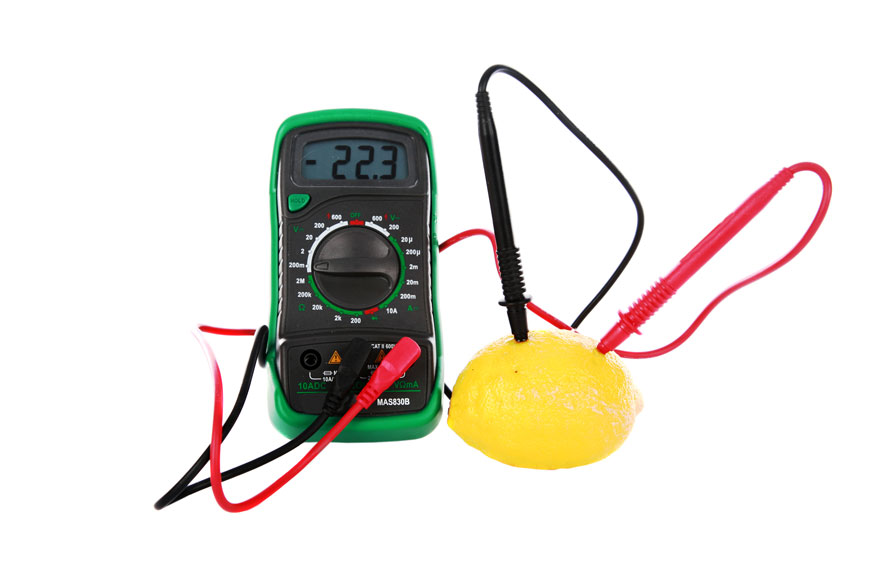
Common types of metal corrosion
Metals corrode in different environments through different processes. The simplest form of corrosion occurs when metals react to moisture and air at their surface. In saline environments, the presence of chlorine in the salt can accelerate and moderate this process. In acid rain, sulfur compounds can be responsible.
Saline environments also facilitate a slightly more complicated process called galvanic corrosion. In galvanic corrosion, two types of metals with very different electrical potentials come into electrical or physical contact in an electrolyte bath, such as seawater. The more passive metal, the cathodic metal, draws electrons from the active or anodic metal. This chemical reaction is a form of corrosion that also forms the basis of electrochemical batteries.
The newly-charged molecules in the anodic metal stabilize themselves by combining with molecules in the environment, usually making oxides or other minerals. In steel, those oxides are rust.
Aluminum is one metal that usually is protected by a passive film during corrosion. However, aluminum can be quickly corroded to failure if bolted with stainless steel screws, due to galvanic corrosion. The steel screws, on the other hand, will be more resistant to rust! The anode’s provision of a steady stream of electrons prevents corrosion in the cathode metal. For this reason, sometimes “sacrificial anodes” are attached to metal that will be exposed to the sea, like on a ship’s hull, to electrochemically help protect the ship’s membrane.
Pitting corrosion is the term for corrosion that does not occur uniformly across a metal’s surface. Instead, small holes appear in the metal. These areas of faster corrosion are usually due to the failure of the “seal” on the material, whether that be a man-made sealant such as paint or powder coat, or the passive film sealant of a top-layer of corrosion. The passivation layer might fail if there are inclusions in the metal, or the alloy isn’t uniform. Metal is a crystalline structure made of grains, and there are different phases of those grain structures. If the chemistry is irregular or deformed it can cause spots that are more vulnerable to corrosion, and even create galvanic corrosion throughout the body of what is the same metal.
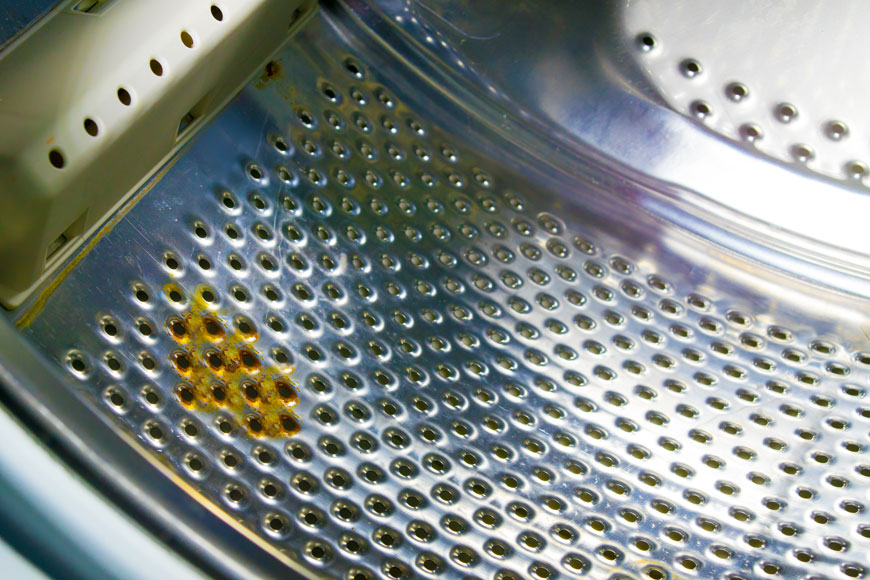
Can stainless steel rust?
Stainless steel is a corrosion-resistant ferrous alloy that fights rust with the addition of chromium. Different chromium percentages are used to make it resistant to regular use, or heavy use in saline environments, as with 316 stainless steel.
However, even stainless steel can rust! All the iron that is locked up in the metal just needs to have exposure to react. It’s relying on the “sealing” passive layer of chromium oxide to protect it.
The chromium oxide layer is only a few molecules thick, and it is not instantaneously formed. When stainless steel is made, it is cleaned with an acid. This acid removes any surface level iron, salt, or grease deposits that could cause a problem for the chromium’s chemical reaction. Depending on the type of acid used it can either be part of the passivation process, or merely prepare the steel to passivate naturally in the air.
Because this passive film is a chemical, it can be disrupted. Very high heat in excess of 750°F can cause molecular changes in the chromium that prevent oxidization, so rust can set in around the site of a weld on stainless steel. In other cases, the chromium oxide layer can be compromised by rapid thermal change, abrasion, breakage, salt, acid, and the buildup of other metal deposits. If the stainless steel comes in contact with too much iron, the localized percentage of chromium may fall below the minimum percentage necessary to maintain a film (lower bounded at 10.5%.)
Therefore, scouring stainless steel with steel wool, can make a rust problem worse! As the chromium is worn away, steel molecules from the scrubber can become part of the base metal, lowering the local chromium content. When the passivation fails on stainless steel, and iron is exposed to water and air, rust sets in.
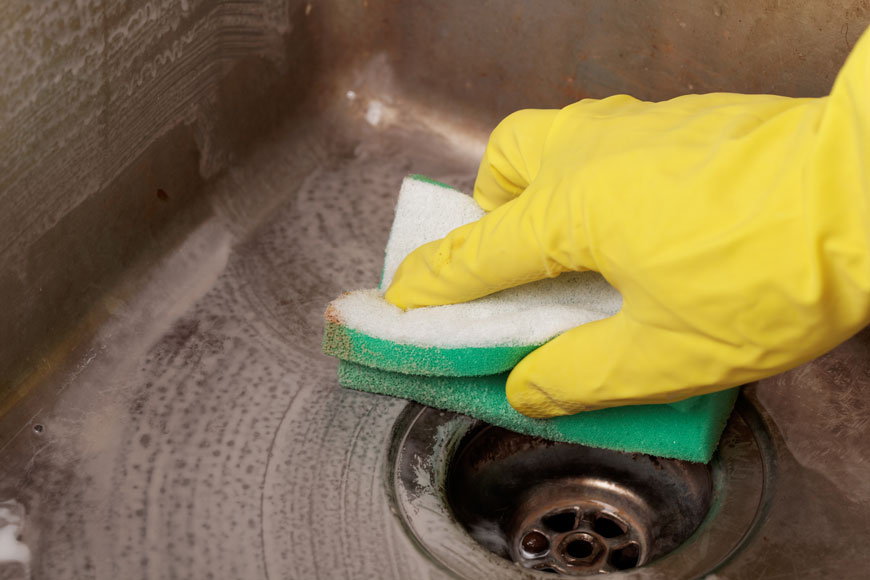
How to clean rust from stainless steel
Advice on cleaning stainless steel often suggests that you must “be careful of scratching the chromium surface,” and therefore recommends against using abrasives and other chemicals. This is not quite correct: the rust is indicative that the chromium oxide surface has already been harmed. The goal of cleaning rust from stainless steel in the non-industrial context (at home or in a small commercial kitchen), is to first clean the stainless alloy completely, removing all rust but also all iron deposits, salt, grease, or acid, and then to allow the material to “auto-passivate,” meaning to react with air to re-form the seal. Staying away from all forms of iron and steel when doing this is one way to be happy with the result.
To clean rust from stainless steel:
- A mild abrasive like baking soda can be used to scrub the surface, with a cloth, sponge, or soft bristle brush, to remove the rust.
- As the rust and any contaminants are removed, the chromium will auto-passivate, instantly, creating its own protective shield.
- The layer of chromium oxide does become thicker over the following few days, so air-drying overnight is helping build its protection!
- After a good rinse, the stainless steel can be left to air-dry, or can be cleaned and polished with a custom stainless steel cleaner.
In manufacturing settings, stainless steel is sometimes cleaned in a hot bath of nitric acid, which “forces” a thicker layer of passivation. For environmental reasons, many manufacturers are currently moving to use of citric acid for cleaning, as might be more common at home, and then allowing the stainless steel to “auto-passivate.”
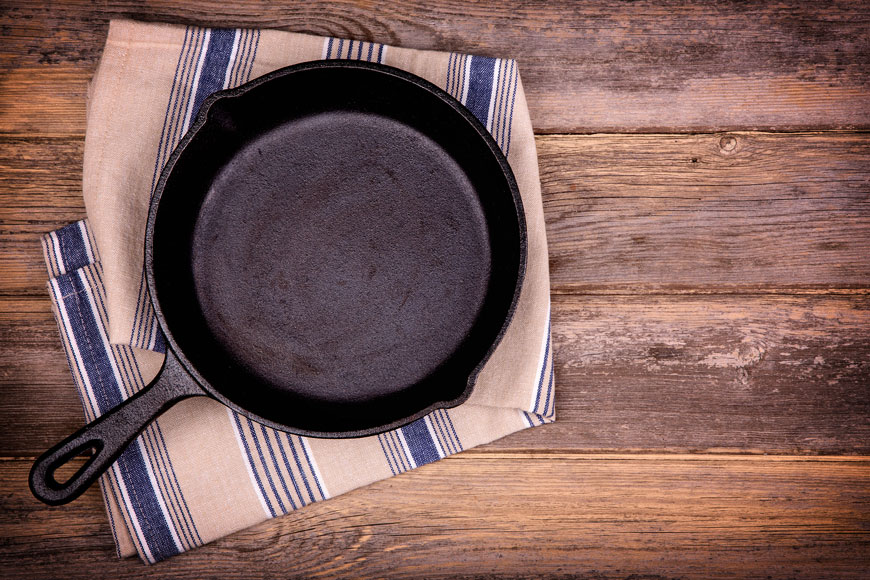
How to remove rust from cast iron and steel
Unlike removing rust from stainless steel alloys, using steel wool or wire-bristle brush can help remove rust from cast iron or steel!
For simple, smaller surfaces, like rusted cast iron pans:
- A scourer and a little elbow grease can remove the iron oxide layer. Salt is a commonly used abrasive.
- The pan should then be given a good wash.
- The pan should be dried over heat, so that all the pores of the surface have liquid driven from them.
- Cast iron must be seasoned with oil, which forms a polymer sealant when baked onto the surface.
- This oil can be painted over the surface in a thin layer and then baked (upside down to prevent pooling) at 375° for 1 hour. Additional layers may be added if desired.
- Food-grade flaxseed oil is the ideal choice in seasoning oils, providing a hard, glossy finish.
Scrubbing is not practical for many objects of complex shapes or sizes. In this case, chemical methods of removal can be the best approach. They have variable efficacy, depending on the type of alloy involved. Common household ingredients like vinegar, molasses, or citric acid can be used. Molasses is a surprising choice, and it does take a longer time than vinegar—but it can be quite effective, as it breaks down into oxalic acid, which helps remove rust.
Commercial rust removing products—often made with stronger acids—are also available. Soaking in these liquids and then removing and drying can be effective in restoring old rusty treasures.
As with cast iron pans, though, it is important to consider how your steel and iron will be protected from the elements after they’ve been cleaned.
Protecting ferrous metals
Iron, in the presence of air and water, will rust. This means that for as long as humanity has been iron-working, we’ve also been working on the best sealants for iron. There are many ways to create a tight layer.
Forced passivation—A very common form of sealing iron or steel is to corrode the first layer into an iron oxide (II), or black oxide, which works like other metal patinas and seals the metal. The only difference between this process and that which happens to copper, zinc, or chromium, is that it will not happen under regular environmental conditions. Therefore, if the top layer on the item is harmed, the whole item will have to be refinished. This is known as “bluing” when done with guns through one process, or “blackening” at most machine shops, through a similar process but slightly different chemicals. In cold blackening processes, iron oxide (II) can be painted over the surface, providing slightly less durable protection.
Regular use and care, including oiling or waxing—Some working iron or steel will be left mostly raw, where use, care, or environment will keep them shining. Traditionally, weapons like swords and gear like knives might have been left “raw” but would be dried and oiled with mineral or cooking oils, which are temporary sealants needing regular reapplication. For long storage, waxes and other polishes might be used to create a seal—but one that would still wear with use.
Engine parts exposed to regular oil might be left raw, as the heat and oil around the engine make them unlikely to rust, but outside surfaces might be painted. The exhaust systems of cars rely on the higher temperatures of a fully hot engine to prevent corrosion, and so driving long enough for the engine block to heat is a way of preventing rust in a muffler. (In high-performance racing engines, the insides might also be painted, but this is mostly to help with the circulation of oil.)
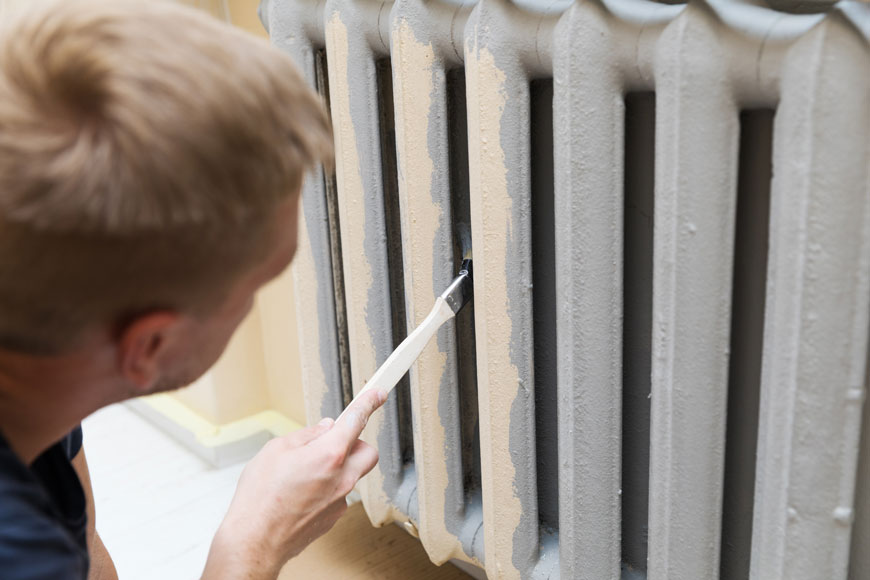
Applied sealants—Many iron and steel products are protected by being coated in a hard layer of another substance. These include:
- Polymerized oil: Linseed oil (made of flax, but not to food-grade standards) was one of the original finishes to wrought iron products. A smith might quench in oil or paint an object with oil and then torch it, providing the traditional black-brown luster that we still emulate on wrought iron today—usually with lacquers, paints, or varnishes.
- Hot-dip galvanization: In this process, zinc is applied to steel or iron in a molten bath. Zinc galvanization has several protective properties. Firstly, it creates a patina, which seals both the zinc and the iron or steel below. Secondly, it is more “active” than the metals it is applied to. Over the life of a galvanized steel object, the zinc acts as the “sacrificial anode.” As it degrades, it protects and slows the corrosion of the steel underneath, even should that steel be exposed.
- Electroplating: Zinc can be applied to steel not through a dip-bath, but by running electrical charge through the steel object, and spraying the object with charged zinc particles. This causes electrical bonding that is uniform and unbroken over the surface of the metal.
- Powder-coat: The process for applying powder coating is like that of applying zinc in that the object and the sealant are both electrostatically charged, meaning a molecular bond without even the tiniest interruptions that will let moisture through. The resinous powder coat is then baked onto the object in a hot oven. The coat will maintain luster for years, providing superior protection and requiring minimal upkeep.
- Paint: Both indoors and out, and even in the heart of high performance engines, paint is a popular and versatile sealant. As an inexpensive sealant it still does a very good job at protecting iron and steel from the elements. When it cracks and wears down, it is simple enough to sand and reapply. Paint’s drawback is its own tendency to crack and flake in weather: even a small hole in the sealant layer can start the process of rust below. However, these drawbacks are sometimes manageable over the use of a part or part of a regular maintenance routine.
Caring for metal objects
Metal is a classically durable material, used to create objects and structures to last over many lifetimes. Yet most metals are still vulnerable to corrosion and electrochemical decay. When beginning a project, consideration of the environment the metal will be in allows a designer to pick the metal that will hold up best in those conditions.
Iron is very prone to oxidization, and rust will usually set in with the slightest hint of water and oxygen. Unlike other metals, this oxidization will not form its own sealing passive layer. Therefore, sealants are usually used with ferrous metals. Finding the right type and keeping an eye on the metal over the decades of its use can help prolong the life of any metal object.


